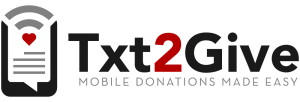Peter Panepento returns with savvy advice about getting your messages heard through crowded, noisy channels for the rest of this year. He urges you to prepare your messaging, prepare to pivot away from that messaging, and more. Plus, the value of journalist relationships. Peter comes to us from Turn Two Communications.
Board relations. Fundraising. Volunteer management. Prospect research. Legal compliance. Accounting. Finance. Investments. Donor relations. Public relations. Marketing. Technology. Social media.
Every nonprofit struggles with these issues. Big nonprofits hire experts. The other 95% listen to Tony Martignetti Nonprofit Radio. Trusted experts and leading thinkers join me each week to tackle the tough issues. If you have big dreams but a small budget, you have a home at Tony Martignetti Nonprofit Radio.
View Full Transcript
Welcome to Tony Martignetti nonprofit radio, big nonprofit ideas for the other 95%. I am your aptly named host and the pod father of your favorite abdominal podcast. Oh, I’m glad you’re with us. I’d be thrown into dentinogenesis if you tried to gum me up with the idea that you missed this week’s show. Here’s our associate producer, Kate with what’s coming? Hey, Tony, it’s get heard in the election season. Peter Panepinto returns with Savvy advice about getting your messages heard through crowded noisy channels for the rest of this year. He urges you to prepare your messaging, prepare to pivot away from that messaging and more. Plus the value of journalist relationships. Peter comes to us from turn to communications on Tony’s take two hails from the gym. This is blood and soil were sponsored by virtuous, virtuous, gives you the nonprofit CRM fundraising volunteer and marketing tools. You need to create more responsive donor experiences and grow, giving, virtuous.org and by donor box, outdated donation forms, blocking your supporters, generosity, donor box, fast, flexible and friendly fundraising forms for your nonprofit donor. Box.org here is get heard in the election season. It’s a pleasure to. Welcome back Peter Panepinto. He is the co founder and managing partner for Turn two, a communications and pr agency specializing in nonprofits, foundations and organizations serving the greater good. He began as a journalist including more than a decade at the chronicle of philanthropy where he advanced to assistant managing editor. You’ll find the company at turn hyphen two.co and Peter is at Key Panopo on X. He’s also on linkedin. Welcome back to nonprofit Radio, Peter. Great to be back, Tony. It’s been a while, but it’s great to see you. I’ve had a chance to, to share the, the microphone with you several times over the years. It’s always great to do this indeed. And our avid listeners will recall that your name, you as a guest were the answer to one of the quiz questions on our 7/100 show. Wow. Yes. Our uh our creative producer Claire Meyerhoff brought uh Claire’s quiz to the 7/100 show and uh it was a quiz for, it was for me. And then all the folks that were with us. This one was directed at me and the, the question was, uh which I believe it was five time guest has initials. That would be funny to a kindergartener. That’s why she did that correct. That’s why she’s the creative producer. I did get, I did get it correct. There aren’t that many people who’ve been on five times and then I thought of uh PP and I knew it. It was. Uh, yes. Do you do? I get like a robe like you do when you’re a five timer on Saturday Night Live or anything like that, or is it? Well, now this is your sixth one? So now you have to wait till 10. There was, we instituted something for five after your fifth. So you didn’t qualify on the fifth and then you’ll, you’ll start something. You have to wait until the 10. I assuming the timing works out. Uh, you’ll, you’ll get a crystal obelisk with 10 if the timing, if the timing is right. So, uh, you have your, uh, biweekly newsletter, your, your, your turn to email newsletter that I’m, I subscribe to and that I think folks should subscribe to where, first of all, let’s, let’s, let’s, let’s acquaint folks with how they can get on your newsletter list. So they may, they may learn of future nonprofit radio topics. That’s how I, that’s how this one came. Where do they, where do they find a, you can sign up for the newsletter right on our home page at Turn two.co or you can reach out to me and I’ll gladly get you added there. Um, our, our newsletter is called on Message and you get, um, we, we try to do weekly but it’s, it’s sometimes in the summer it’s biweekly, but you get weekly, uh, pr and communications advice. That’s really spec, you know, specifically focused for people who work in the social good space. So it’s really geared towards people who are working for nonprofits and foundations. And, uh we really try to make it as practical as possible for folks who are wanting to maximize, uh maximize their communications and pr for their organizations on message. OK. And so I’m sorry, I, I, uh, credited you with being always biweekly. I thought it was always biweekly, but I, I read them whenever they come as often as they come. I read them in the summer. So I think it is, it was biweekly now. All right. So that’s very, that’s very gracious of you to say thank you. Uh Saving me. Uh And one of the recent ones uh that you wrote was about uh crisis, communicate well, was about uh not crisis. It was about getting your message heard in our um really presidential election cycle. Uh There’s nine, we’re recording, I believe there are fewer than 90 days left until November 5th. Um a lot. So there’s a lot of messaging around that obviously, uh which could be valuable. We gonna talk about that. There, there could be hooks there for you. Um But just, you know, in a, in a crowded media landscape which is, I think now typical uh to me it’s above average from what it was over. I don’t know. Well, you know, you and I have known each other for about 14 years. I think the level of communications the level of attention grabbing uh by all media and all channels, you know, has, has increased. There are, there are more, there are more places that want our attention and then that’s amplified by the uh presidential cycle that we’re in and nonprofits still have important messages that need to be heard. Absolutely. It, I think you’re absolutely right that it’s becoming increasingly hard or difficult for us to be able to get our messages heard, given the amount of noise that there is out there. And, uh if you think about what has already happened in this presidential election season, um, you know, we’ve had an assassination attempt, we’ve had a, uh, uh, you know, criminal convictions. We’ve had, uh, Joe Biden, you know, doing his bombshell, you know, dropping out of the race, we had the fallout from the first debate. Um If you had tried to, to get all of this into an episode of the West or a season of the West Wing, you would have been told you were jumping the shark on the Republican convention and the, and the democratic convention is coming up in a couple of weeks. Right. Yeah, that hasn’t even happened yet. And this is being recorded. Um, uh So, and, and each and all of these things just create so much noise in the media and in social media that it becomes really hard for nonprofits that are, are vying for the public’s attention to get their voice. Heard you have to, to really be ready to kind of roll with the punches, uh capture opportunities that happen, but also be really willing to kind of scrap your best laid plans in the in the, you know, in the, in the wake of bombshell news as they as it happens. So it really requires you to be both prepared and adaptable. At the same time, you had uh 44 major points in the, in the, the Onmes uh uh uh email that I received that uh stimulated me to email you and say, let’s talk about this on nonprofit radio. And your first one is to um create a new or review your crisis communications plan. You and I talked about crisis communications plans years ago. So we’ll hit a couple of those points. But why, you know, why is that essential now in, in our extra crowded media landscape? Yes. Um It’s really important for organizations to have a crisis, communications or rapid response communications protocol or plan. Uh because um things are happening so quickly. You need to really be equipped to get your message out quickly or make a decision about getting a statement out. Um You know, and, and be able to do it in a way where you can respond while the news is fresh. Um So a lot of organizations will kind of wait for something to happen. Uh They’ll have a discussion about whether they need to put a statement out, they’ll have to get it reviewed by, you know, the, the, uh, executive director and, or board of the organization. And by the time they do all of that they’ve missed the moment, uh, it’s been, you know, days have passed by the time you’ve kind of gone through all those steps and, and you’ve either missed the moment or you’ve gotten run over by what’s happened. It’s time for a break. Virtuous is a software company committed to helping nonprofits grow generosity. Virtuous believes that generosity has the power to create profound change in the world and in the heart of the giver, it’s their mission to move the needle on global generosity by helping nonprofits better connect with and inspire their givers, responsive fundraising puts the donor at the center of fundraising and grows giving through personalized donor journeys that respond to the needs of each individual. Virtuous is the only response of nonprofit CRM designed to help you build deeper relationships with every donor at scale. Virtuous gives you the nonprofit CRM fundraising, volunteer marketing and automation tools. You need to create responsive experiences that build trust and grow impact virtuous.org. Now, back to get heard in the election season, the moment can last like 12 hours. Right. Right. Yes. And then, and then the media has moved on and nobody’s gonna be interested. That’s right. That’s right. And um so we really advise having AAA rapid response protocol in place where you have a clear set of steps that you take in response to some too fast moving news. Um, you kind of know who’s equipped to do what, um you’ve game planned some scenarios and you even have some key messages prepared ahead of time. So that when that moment strikes, you know exactly what to do, you can pull things together quickly and you can get the approvals you need. So you don’t miss the moment. Um So that, that’s the first thing we recommend everybody do um at your organization. And if you have one already, that’s a wonderful thing. It’s probably smart for you to, to, to revisit that a couple times a year, make sure everything’s up to speed that your messages are, are clear and in good shape and that, you know, all the key people who are part of that protocol, know their roles and have kind of done some um some prep work ahead of time and are are kind of ready and practiced and ready to go. Yeah, because a part of that is going to be who the spokesperson or people are. That’s right. You, you, you suggested having messages that are ready, which you know, clearly you may need to tweak based on what it is that’s uh stimulating this, this, this move, this need to do to get into the media. Uh But having something to start with, but who’s going to release them? Is this a and in what form is this social media post. Is this a press release? Is this calling the reporters that hopefully we have relationships with? Right? I mean, what form does it take and who are the people who are doing the work? That’s right. And, and it really helps to game out some of those scenarios and know who’s going to be your spokesman, who’s going to be the person who is putting messages out on social media or by email and even how to decide how to do that. Um We’ve done this with a number of organizations put these plans together and the thing we tend to do is is put together almost a matrix. You know, if this happens, here’s what we’ll do. Um Here are some of the key messages that we’ll want to pull from and, and here’s how we’ll, how, you know what channels we’ll use and what way we’ll, we’ll actually deploy the message based on, based on what’s happening. And you can, you can game some of this out ahead of time and say, all right, this type of thing, you know, is something we would respond to on social media. Um Here, here’s who needs to be involved here, here’s who needs to make the final decision on it and, and just having that in place saves you so much time when, when actual situations arise, what could be some triggers that would stimulate entry into this? Well, one would be um, news that affects your organization or, or is about your organization. So let’s say you’re an organization and um there’s a rumor spreading on social media about one of your key employees or about one of your key donors. Um You’ll wanna definitely get, get the word out quickly. So that uh about what’s true. So that um a rumor or, or some, some, you know, conversation that’s happening about you doesn’t grow legs and become, become a story. Um in the political realm, it might be um one of the political candidates making a major policy statement about your, something that relates directly to your cause and wanting to make sure that you kind of come out and, and talk about what type of policies you think are important uh to make sure that you’re, you know, a accurately and, and, and actively um being a spokesperson or a champion for your cause. So if um if one of the candidates comes out and says that they want to um uh you know, bring back the charitable tax deduction uh for, for anybody who files their taxes rather than just add itemizers, there might be something you want to say there. Uh If one, if you’re an environmental nonprofit and one of the candidates says that, you know, we should just go back to, to um to the old days of not having the EPA, you’ll certainly want to have something to say about that too. So, you know, having, having some key statements in place, um that really validate what you stand for and, and, and how you would respond in, in certain situations can help you respond quickly in situations like that. Using that energy example, makes me think of fracking. But, but I think it really, it had like a six hour moment and, you know, it was, uh one of the candidate. I, I, maybe it was, I think it was Kamala Harris said something she had in the past. She, uh was completely opposed to, uh, fracking, wanted to have a nationwide ban when she was running for president um in that cycle. And, but now she’s, her position has evolved. So if you had something to say about fracking or energy policy, you know, if you saw a hook, you had to act fast because it was not a, it was not a major, you know, it wasn’t like the assassination attempt, but it was in the news, her, her position, some people call it flip flopping. She would say she evolved what it doesn’t matter. Fracking was in the news for a while. So if, if that’s related to you, like, because you’re in Virginia or Pennsylvania and maybe your population is affected by fracking adversely or, or positively, maybe the, maybe the revenues, the stream of revenue from fracking has been, has been valuable for, for your population in southeastern Pennsylvania. Uh You know, so you want to, but it wasn’t, it wasn’t a long cycle before, before fracking was out of the news and then it was old. Yeah, that, that, that’s exactly true. So, you know, being ready for when those, those situations arise so you can capture the moment is really important. Um, and it can be for even bigger things that have longer news cycles. Uh, when, when the Roe decision came down by the Supreme Court, um, I think it was two years ago now. Um, the nonprofits that were ready to respond quickly to that and, and had something in place were the ones that were getting a lot of the media opportunities because they, they had already are, they had their, their statements and, and what they were going to say and their spokespeople ready to go and equipped with what to say. So when that decision came down, they weren’t scrambling. They, you know, they were able to pull from, well, if this, if this decision comes down, here’s what we’re going to say, here’s who we’re going to reach out to. Here’s how we’re going to deploy that message. And they were the ones who were, you know, on television and, and, and putting out statements on social media that we’re getting a lot of attention to. So it can be for something unexpected, like, you know, uh, uh, you know, fracking, you know, being, uh an issue coming out of one of the, the campaigns or it can be kind of a major policy or or court decision that, that, you know, that really connects closely to your cause and, and something that you know is coming. Right. Right. We knew there was going to be a decision about abortion in the United States. That’s right. So you could prepare ahead for that. You can’t prepare ahead for everything that a candidate is going to say, especially a brand new Democratic candidate where we don’t know a lot about what she talks about and a Republican candidate who can really say anything at any time. Um So, um but knowing like what you’ll say, if your cause does end up in the news, regardless of whether it’s a positive or a negative statement from one of the candidates can really help you capture that opportunity. And before we move on, I want to apologize to uh the Pennsylvania residents. I southeastern Pennsylvania is Philadelphia. So they wouldn’t be fracking there. Yeah, central I instead of southeast, I probably meant uh like uh northwest, northeastern, northwest, northeast or central northeastern central Pennsylvania. All right. I, I, I’m sensitive to the, to the, to the listeners in Pennsylvania. I understand. And plus I went to law school in Philadelphia. I think it’s all good. And I went to law school in Philadelphia. So I know there’s not fracking on uh on broad street or around uh around Rittenhouse Square in, in Philadelphia. All right. Uh Anything else, anything else on uh crisis, communications, creating it or reviewing it. Um, I, I just think it’s important to, to take the time to do that and, and, you know, even if you’re a small organization just knowing, you know, who gets the call when something happens or, um knowing that you might have to have a, a consultant on, on call in certain situations, you know, gaming that all out ahead of time, just put you in so much better position when, when real situations arise. What’s your next point? Well, the next point is uh being ready to pivot. Um you know, most organizations plan out what they’re planning to do with their communications and, and pr efforts a bit ahead of time. Uh It could be that you’re scheduling, you know, social media posts a week or two in advance. It could be that you’re, you know, you’re targeting a certain date on the calendar for a major announcement. Um And when you plan those things out, you’re, you’re doing it kind of taking into effect, what, what you know, is going to happen on the calendar, you may peg it to a certain holiday, you may peg it to a certain milestone or an anniversary that you’re having with your organization. Um But, you know, when unexpected news happens, you really run the risk of either getting those, those carefully planned messages drowned out or having them seem very tone deaf if they, if they come out at the wrong time. So, um so it’s really important. Um Even if you’re planning things out well in advance and you, you feel like you have everything buttoned down to really be paying close attention to what’s happening in the news and being prepared to, you know, hit, pause on that scheduled social media message for a few days until, um, until, you know, a situation that might seem insensitive to be posting about passes, um, or, um, or holding off on a, on a planned news announcement, um or even just completely, you know, rethinking the way you’re communicating about something based on what’s happening in the news. So if you were AAA nonprofit that had, um that had uh social media posts out about voting or civic engagement or, or anything related to uh anything even remotely political the days following the, the President Trump assassination attempt, for instance, it was, if you run the risk of it, either seeing insensitive or, or just getting drowned out by what’s happening out there. So, um it’s really important to just, you know, not just think about what’s happening in the news as a news consumer, but as uh what does this mean for our communications? I, I think, yeah, the assassination attempt is an excellent example. Uh Any, any of these, uh I think of uh President Biden stepping aside, you know, so if you had anything that was like critical of the administration, you know, it seemed like that would, that would be a bad 48 hours or so to in which to release it. That’s absolutely true. And I, I even think back to Tony, an example from when you and I were working together on uh on um on the uh plan giving Accelerator. Uh We had a meeting, I think the first meeting planned on January 6th, 2021. And uh once we saw what was happening in the world, we were like, well, there’s no way anybody’s gonna wanna sit in on a meeting on this. That was the fir that was the first meeting of our first class. It was exactly right. And you let me know what was happening. I didn’t know and we got a message out quickly, the class is canceled, you know, we’ll be in touch uh because of what’s happening in Washington DC. Um Yeah. Yeah, exactly. Right. So, yeah, be prepared to pivot and be ready to move quickly if you have to. So, um it wouldn’t, it wouldn’t have been a very engaged class on that first day. I don’t, I hope I didn’t hesitate. I didn’t hesitate. Did I didn’t, I didn’t push back and say no, it’s a, it’s an auspicious occasion. It’s, it’s something important is, is Martin Planned, giving Accelerator. I can’t, no, I didn’t. I think once you, I think once because you were busy preparing for that, that I was preparing. Right. But once I, I went to the CNN or something and I saw the you know, people crawling up the walls of the capitol. No, of course. Yeah. As soon as you knew what was happening, you knew, you knew it was time to hit. We were on the phone. You didn’t have to bring me along. We were on the phone. We were on the phone together and yes. All right. Prepare to pivot. Ok. Um, key messages, even though you may have to change your messages, you sh you alluded to this earlier, but let’s flesh it out, having, having some messaging ready, right? So in those fast moving situations, if you are somewhat prepared with what you’re going to say, um you know, if candidate A says, you know, something that relates to your cause or candidate B does um or even if something’s happening in the world, um that, that relates to your cause. If you have some key points that you have already vetted, worked through with your team that you kind of have in your back pocket and ready to go in a fast moving news situation, it can be really helpful uh in terms of you being able to get something out quickly and often those messages can, can really be an affirmation of what you stand for as an organization. Um What you think is, is, is the best course of action to, to make sure that you’re um ensuring that your mission is, is achieved. And um and even working through um how to, how to make statements in a nonpartisan way while still kind of validating what you stand for. Um If you can spend some time working through those in advance, having those in your back pocket or, you know, not physically in your back pocket, but, but somewhere on your hard drive, um where it’s something that um, your executive director, your board, everybody’s had a chance to weigh in on when a situation does arise. You can pull from that. Um Play a little bit of mad Libs with kind of filling in the blanks of what’s happening and, and get a statement out very quickly. It’s time for a break. Imagine a fundraising partner that not only helps you raise more money but also supports you in retaining your donors, a partner that helps you raise funds both online and on location. So you can grow your impact faster. That’s Donor box, a comprehensive suite of tools, services and resources that gives fundraisers just like you a custom solution to tackle your unique challenges, helping you achieve the growth and sustainability your organization needs, helping you help others visit donor box.org to learn more. It’s time for Tony’s take two. Thank you, Kate. I’ve got another tail from the gym. I go to classes once a week. Usually I like to work out just by myself, quietly, do my own thing. Elliptical floor work, Pilates, push ups by myself. But I do go to a class once a week each Tuesday and in my very first class, uh, you know, I walked in, it was, first of all, it was all women. I was the only guy in the, in the room and I saw, you know, everybody had their stuff, like, you know, they had water bottles. I had a hoodie on, uh, people had like light jackets, you know, whatever, all lined up along the wall. So I went over and, uh, I put my little pile, took my hoodie off, put my little pile of hoodie and my keys and my little ID card for the gym. You know, I put that all in a, in a pile next to somebody else’s pile right alongside the wall and I went and got some, uh, weights because the woman who runs the class was announcing you’re gonna need weights. So I was going over to get the weights and then I came back and the woman who, uh, was belonged to the, the pile that was next to mine started to talk, you know, hello? She said hello? You know, she didn’t ask my name. II, I remember that. She, but hello, you know, you look new to the class. I’m the only guy in the class. So I guess I am new to the class. She said, ok, well, I’ll just move my stuff. I said, oh, I, I said, well, ok. Well, I don’t know, just move your stuff. What it’s not, I don’t care if it’s touching my stuff. Is that your concern that it’s, that the, the two piles are, are, uh, I don’t know, commingling the, the, they’re, they’re having some kind of intercourse what the piles are touching. You just can’t have this, but maybe I have bedbugs in my hoodie. What, what do you mean? You’ll, I’ll just move my stuff. She says very curtly after being, you know, kind of pretty cordial, you know, just friendly. Well, I’ll just move my stuff. That was it. Well, well, I’ll just move my stuff. Uh, ok. What I, I can move my stuff. I just, I see, I see piles along the wall. So I, I stuck, well, this is where I work out. I said, well, ok, I, I didn’t know, I didn’t, I didn’t know that the title delineates your Space, Mrs Blood and Soil. I didn’t call her that I didn’t say I didn’t say that. I didn’t know that that would demarcated your, your turf. You know, you can work, you could, you can work out here, that’s your place and I can see how it’s important to you. It’s a big room. It’s like a big fitness center room. You know, it’s, I don’t know, a couple of 1000 square feet, no wood flooring. It’s not like there’s boxes or anything with your name or a little chalk line where you write your name or something, you know, and there’s weights on one side and there’s, uh, the balls, you know, the big, the big flexi whatever those big balls are, there’s a bunch of those along another wall. You know, it’s a big, big room, a couple 1000 square foot room. Uh, you your spot, your turf. So I said, ok, you can have, you can have your spot. It’s my first time. I didn’t know. Uh, I moved my stuff over a little bit so they wouldn’t be overlapping the piles. And then I worked out uh I did the class for an hour, you know, 11 step over from her spot. So we, we worked out together. I gave her her turf. I was like, what? You know, not be gracious and kind, right? Be uh embodying uh a good, a good spirit and friendly to neighbors and welcoming. I work out here. All right, fine. So that was my first class. I still go to the class. She’s still in her special spot. I’m not, I’m not anywhere near that. I don’t need to be, you know, like week after week I’ve raised my heart rate by having uh turf wars with the Mrs blood and soil. So, you know, I, I go somewhere else. I work out in another spot and if somebody gets there before me or you know, I there’s no spot. It’s not like my spot or her spot, it’s just first come first serve. Alright, I think you get the idea that was Mrs mud and soil. But I still go to the class every Tuesday. Uh, I just work out on the other side of the room from her and that is Tony’s take two Kate. The entitlement. Yeah. Astonishing in some people and, and not even, you know, I mean, an older woman who should know better. She’s, she’s, she, she’s quite fit. Uh, I have to give her that she’s very fit. Uh, I don’t know, she looks a little older than me. 65 maybe 70 or so. You know, somebody who shouldn’t be. Yeah, feeling entitled having wars over like you’re, yeah, you’re new to the class. You would think that, I mean, if your stuff was genuinely on hers, I think there’s a different way to approach it and be like, could you move your stuff because your stuff is on my stuff. But if you’re, but the way that she said it is so entitled and the fact that she’s like in a class is very embarrassing, like go home and work out if you can’t be around other people like that. That’s very savvy advice for this 65 or 70 year old. Yes. My blood is boiling. Well, we’ve got just about a but load more time. Here’s the rest of get heard in the election season with Peter Panepinto. You’d want to know what, what format the, the statement is gonna be. Again, I would say it was a press release. It was an email, social posts and you want to think through what the channels are gonna be with being prepared to pivot on that as well. Absolutely. Absolutely. So, yes. So here’s, here are a few points we would make for a news release. Here’s a few things we would do in a social media or, or, or kind of email statement. Um And, you know, you can almost have some of these things templated and ready to go where you can, you can fill in some key details. Um And, and make sure you’re ready to go. Um We even went so far with an organization we’re working with right now that has a, um the, the founder of the organization is, is getting rather advanced in years and, and um uh we worked with them to prepare what we would do if something were to happen to her and they needed to get something out about her passing. So, um we’ve, we’ve gone ahead and written kind of a AAA templated news release a statement for the website, some social media copy to help them prepare for, you know, for if and when that happens. And we’ve, you know, she’s been part of the vetting process on that and, and has seen what is being said, it’s kind of like writing your own, like writing your own obituary at a time, but it, it, it allows the organization to make sure that they are announcing that news on their terms uh that they’re explaining clearly what would happen in that, in that situation and, and what the plan is for the organization moving forward and also on her legacy at the same time. So you can almost game out some situations that may impact your organization, whether it’s something political or even something like that where, where you might have to unexpectedly announce, um you know, a, a, you know, somebody no longer being with the organization or, or passing away. And um by taking that those steps ahead of time, you, you really put yourself in a position that kind of own your own narrative in those situations. Was this woman amenable to that process. Did you have to be pulled along a little bit? Like, no, explain the value. She, she recognized it. No, she was, she’s a very self aware leader and I think understands that. Um but, you know, and, you know, even if, uh even if you’re the not actively involved in the day to day operations anymore, and you’re the founder of the organization and still engaged, I mean, that’s, that’s a, that’s a major event for that organization. And um she was, she was open to it. I don’t know, you know, personally how she felt about it, but I, I do know that, that she recognized the value of doing that and uh the staff and board of that nonprofit, I think feels very comforted knowing that um you know, uh you know, father time is undefeated, it’s gonna hit, hit all of us at some point that, that this is, you know, that they will be prepared to communicate with their supporters and with the public about what happened in a way that, that she is comfortable with and has signed off on already. And that, you know, the organization is also comfortable with too. I kind of like the idea of contributing to my own obituary uh after a life of selfless sacrifice and uh enviable success. The, uh, no, I like the idea of contributing to my own obituary. I’m starting to write it now. Ok. And your final piece of advice from, uh from the Onmes newsletter. Yes. And, and that is to be ready for November 6th and beyond. Um II, I don’t think anybody, regardless of where they are in the political spectrum, uh thinks that this is a, uh a minor election. This is an election that has a lot at stake. Um And, um there are a lot of potential eventualities with it, uh regard, you know, depending on who wins and, and which party controls the Senate and the House and everything else. Um It’s very hard to predict right now. Um But very likely depending on your cause. Um People are gonna want to hear from your organization on November 6th or November 7th and, um with, with what the, what the, what, what the stakes are for the outcome of this. Um And so it, it might be helpful for you to, to game out um a few different scenarios and, and, and be able to talk about what it means for your organization and your cause. So, you know, depending on which presidential candidate wins and which candidate or which party controls each house of or, or chamber of the, of, of congress. Um and even, even at the state level, at the state level and especially at state and local level for a lot of organizations, um whatever happens on Election day will really impact the work that you’re going to be doing and um the impact that it’s going to have on the people that you serve. So it could be your local school board planning board, your mayor and council election, any of those, any of those things on the local level as well. Yeah, absolutely. So I think it’s really important to think about like, you know, what, you know, what a scenario or b scenario will mean for your organization or your cause and, and what you’re going to be asking people to do, it could be a cause to, to raise more money. It could be AAA call to advocate um for, you know, for, you know, some aspect of your cause. Uh it may be a cause to celebrate but you know, and say the work isn’t done, we still have to do XY and Z in the months ahead. But really thinking about um how you’re going to respond to that to, to the results of that and having some things queued up and ready to go can again help you, um you know, own your own message in those situations. If, if there are things that you want to ask people to do, especially if it’s raising money, the faster you can do that and capture the moment the, the more successful you’re going to be. And also, I think if you’re not heard from right after the election, uh uh you, you risk being irrelevant, like these people have nothing to say, but, you know, they’re not going to think of it right away. But then two weeks later, when you, when you do send a message related to whatever it is, you, you finally got around to sending, let’s say, well, well, didn’t they have anything to say about the election outcomes? I mean, the local, the local school board, you know, and, and they, uh, and they advocate for, they advocate for, for Children, they, they advocate for uh uh a free pre kindergarten universal or, you know, whatever you, you risk being just kind of like I said, irrelevant, left out of the conversation or moving yourself out. Right. Right. So, yeah, there are, are, are real opportunities in the, in the months ahead to, to think about what you want to say in November. Um And you know, I, you, I, I think it will be impossible for us. To predict who’s gonna win. Xy and Z at this point in, in most cases, this year, it’s, it’s very close everywhere but you can be ready with, with whatever message you want to get out there, depending on the outcome uh by taking some steps now. Um And, you know, I think about a lot of the progressive organizations, uh right after the election in 2016, a lot of them were in mourning and we’re not putting, we’re not saying anything and that it took them uh in some cases weeks to, to, to be able to weigh in and, and mobilize people and, and that was a waste of time for that. Let’s talk about something that uh you and I have talked about in the past but it’s been a few years. Um i it’s all related to all of what we’re talking about today is the value of having relationships with journalists that are, that are long standing, not just when you need the person, but you know how to build those relationships. Well, let’s start with just the value of knowing some journalists in advance of when you have something to say. Right. Right. I it’s really important um regardless of whether you’re a local organization or a national organization or something in between, to really identify what journalists are covering the topics that most intersect with your organization or your cause and uh and making sure that you’re taking steps to, to cultivate them and let them know that you are a resource for them. Um because it, it’s really valuable in two ways. One, they’re ready to, um uh they’re gonna be more receptive to covering something significant that’s happening with your organization or that you’re looking to announce and, and b it, it provides an opportunity for when the journalist is looking for an expert, uh to comment on a specific topic for you to, for you or your, your executive director, your, your board chair, whoever is your, your biggest spokesperson uh for them to reach out to you when they’re working on something and, and get you to weigh in on it and, and share your expertise with them if, if you’re interested in, in, in reaching people and, and, and persuading people about whatever cause you work on and, or just getting visibility, cultivating those relationships is really important and by cultivating those relationships, I don’t mean just sending them a press release three times a year with like um and, and not, and not engaging them. Otherwise it, it often can involve you reaching out to them, telling them a bit about your work or a story that you think is important but then asking, you know, what are you covering, what’s of interest to you? How can I be helpful to you and, and starting to build uh some rapport and a relationship with them so that um they take your call or they, they, they open your email when you send something to them and, um, and, and that you’re top of mind for them when they’re looking for something. You pulled a, uh, car talk. You remember that, uh, show on N Pr Car Talk? You did, uh, you did number one and B Yes, I, it was funny. I was, I was halfway through saying that and I was like, did I use one or eight years ago? Then the car talk guys used to do that all the time. One and b uh, don’t worry about it. Um, no, so you’re, you know, I mean, you’re a 10 plus year journalist. So, so reassure us that journalists are open to conversations before, you know, before we have that they’re open to having relationships. They are like you and me and journalists are people too. That’s right. That’s right. And they also get bombarded with a lot of, a lot of pitches and, and press releases and emails and kind of like you and I do every day, like where, uh, where all of us do every day where it’s, it’s a bunch of stuff that’s not relevant to you. Right. It, it’s clear that the, the person that’s sending this to them doesn’t know what they cover, doesn’t, it doesn’t even know what beat they’re on. And, um, when you’re, when you’re drowned with hundreds of messages like that every day when somebody actually does take the time to say, you know, Hey, I’ve, I’ve, I’ve paid attention to what you cover. Here’s a story. I think you might be interested in that, that actually relates to what you cover. And if it’s not, you know, I’m here to, to find out what, what is valuable to you and, and, and provide you with some, some insights and resources to help you get it. Um that stands out first of all and second of all, it, it, it, it is something that gets noticed by that journalist because you’re, you’re not just throwing and trying to pitch them all the time. You’re actually taking the time to find out what, what that journalist needs. And um when you take that stop, you know, they may not respond the first time, but if they see that you’re genuine and that you actually are paying attention to what they’re doing, oftentimes they’ll, they’ll start a conversation with you and, and it turns into something really useful. Um you know, as a journalist, you wanna have, you know, some, some vetted people that you can turn to when you’re on deadline or an editor gives you a story that you’re, you know, that, that’s, that’s on a topic that you don’t cover every day. Um to be able to say, oh, the executive director at the, the local food bank really knows her stuff and I can, I can reach out to her and get a, get a read on what’s happening here and and you know, once you, once you have that, that list of go to sources, it, it becomes very easy for the reporter to, to get their job done and you’re helping them. I have a, I have a personal story that is an ideal example of what you’re talking about. Um, Stephanie Strom at the New York Times used to have the nonprofit beat when that, when that exi when that beat existed in nationally internationally known papers, she had it at the New York Times. And, uh, and I reached out and we actually, we ended up having coffee and, and through the years she, she, she called me, uh, sometimes I was never qu I wasn’t quoted, but I was happy to help her on, on background about some nonprofit fundraising issue. But there were times when she did quote me. And so, uh, and that, that’s a major, you know, the major outlet of the New York Times, um, years ago, she’s, she’s long said there’s no nonprofit beats anymore that I’m aware of. Um, and she’s long since left the New York Times. But, you know, that was, and that was just on the strength of doing what you suggested. We, we, uh this is, this was before I met you. So I was not using your wise counsel. I had the, I had the, uh almost equally wise counsel, not, not nearly as wise as your counsel, uh, council of, of another person who you know, we, we looked at her stories and what she had done and crafted an email and I followed up by phone and we ended up meeting for a coffee. Right. Right. It’s, it’s almost the same as if you’re a fundraiser, you know, really making sure that you’re getting to know your top prospects. Right. And that’s, that’s a perfect analogy. Yeah. Yeah. Absolutely. Being persistent, pleasantly persistent. Um, and, and you don’t know where that relationship is gonna go and that’s what ended up happening with me and, uh, and same with your donors. That’s a very good, exactly. That and, and, and often they’re, they’re not going to cover exactly what you want them to cover. But, um, if, if they are covering something that, that connects to, to what you’re doing and they see value in talking to you, you’re going to get a lot of value out of that even if it’s not, you know, hey, you, you know, you’re, you’re not covering the press releases, I’m putting out, but you found something else that’s really, that’s really valuable that my organization can provide, um, that, that, you know, being included in that kind of coverage when it’s not something that you’re pitching yourself, it can be incredibly valuable to you. So propagate the, uh, the journalist relationships because they, they, they, they can be enormously valuable and they, and they don’t have to be on a national scale. You’re local, local outlets. Absolutely. 11 thing that we, we advise a lot of people about is don’t worry about the, you know, reaching the biggest number of people, make sure you’re reaching the people that, that matter most to you. So if you’re a local profit, um you know, being covered regularly in your local paper on local television is way more valuable to you than, than being uh you know, included in some national story once, right? Um So, you know, really be mindful of like, where are your donors? Where are the people who you need to be advocating for you? What, and, and, and what journals there are the ones that are, are covering the topics that, that you care most about and, and really focus your efforts there. Ok? If we leave it there. All right, I’m great. If we leave it there, Peter Panino, the company is Turn Two Communications. They’re at turn hyphen two.co, you’ll find Peter at uh P Pena Peno on X and also on linkedin, Peter. Thank you for a valuable conversation. Thank you for helping our listeners. Thank you, Tony. Always a pleasure to join you and uh and glad we can, we can cover this timely topic before we get too close to the election. Absolutely. Yes. Great value. Next week, the responsive nonprofit with Gabe Cooper. If you missed any part of this week’s show, I beseech you find it at Tony martignetti.com. We’re sponsored by Virtuous. Virtuous. Gives you the nonprofit CRM, fundraising, volunteer and marketing tools. You need to create more responsive donor experiences and grow, giving, virtuous.org and by donor box outdated donation forms blocking your supporters, generosity. Donor box, fast, flexible and friendly fundraising forms for your nonprofit donor. Box.org. Our creative producer is Claire Meyerhoff. I’m your associate producer, Kate Martignetti. Mark Silverman is our web guy and this music is by Scott Stein. Thank you for that affirmation. Scotty be with us next week for nonprofit radio, big nonprofit ideas for the other 95% go out and be great.



















